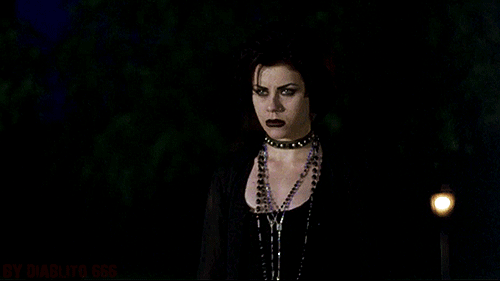All Seasons of the Witch: Magical Women in Post-Counterculture Cinema by Alison Nastasi
By Yasmina Tawil
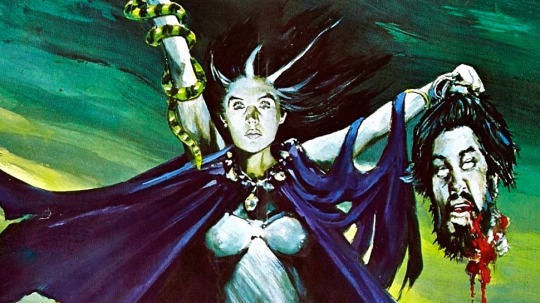
“Wildcats shall meet hyenas, / Goat-demons shall greet each other; / There too the lilith shall repose / And find herself a resting place,” reads Isaiah 34:14—the only biblical passage that mentions Lilith, the first wife of Adam and history’s first witch. The origins of Lilith are frequently conflated with a Mesopotamian demon named Lamashtu, as described in various ancient cuneiform texts. In these stories, Lilith takes the form of seven witches bearing seven names. These archetypal stories about women have firmly established an association of the feminine with monstrosity since the cradle of civilization.
While other creatures, particularly vampires, are often strong, gender-neutral cultural signifiers in fiction, the witch remains a gendered monster that male authors use to exploit the feminine identity and image. Only in recent decades has the trope of the witch been turned on its head and used to examine the implications of its dubious cultural reputation as it relates to the lived experiences of women. In the context of cinema, the classical Hollywood portrayal of witches is largely tied to romantic (or male) fantasies and stories about social assimilation, evidenced in films such as in I Married a Witch and Bell Book and Candle. The former movie follows a reincarnated sorceress who falls in love with the ancestor of her executioner, while the latter film finds a modern-day witch sacrificing her magical powers for love. After the rise of the 1960s counterculture, filmmakers became less interested in portraying the mere otherness of witches and more concerned with imbuing an indelible humanity on these characters, creating complex women who have the potential to be sources of darkness and light.
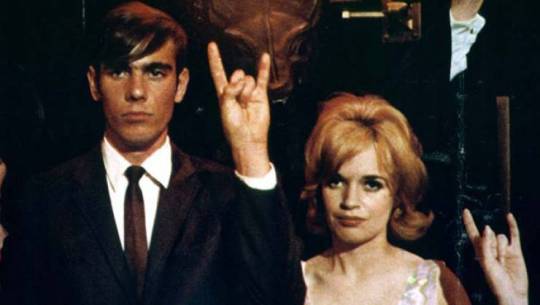
Witchcraft ’70, a mondo movie that uses elements of exploitation and documentary cinema, raises this “conflicting axis of the [human] soul,” to investigate the world of witches, Satanism, paganism, and free-love communities. The film mainly survives as an amusing relic that demonstrates period-specific fears and curiosity around occult practices and alternative religions—and, tangentially, women. The movie’s bizarre emphasis on marriage rituals, combined with its cynical voiceover narration, reveals its creators’ disdain for youth culture and mirrors the real-life conflict surrounding increasingly empowered women during the proto-feminist period.
Just a few years later, Season of the Witch (alternatively titled Hungry Wives and Jack’s Wife), George Romero’s 1973 straight-faced domestic satire, explored witchcraft, feminism, and suburban malaise through lonely housewife Joan Mitchell’s marital crisis. Joan is a passive observer in her own life, completely disconnected from her tyrannical husband, Jack. Throughout the movie, Jack is physically and verbally abusive to Joan. Romero establishes a slippery fantasy-meets-reality dichotomy, beginning with an introductory dream sequence: Joan imagines being beaten with a newspaper and led around on a leash like a dog by Jack. Even Joan’s doctor dismisses her feelings of isolation and blames Joan for her problems (“The only person imprisoning Joanie is Joan.”) An entire world opens up to Joan after she discovers witchcraft. She becomes liberated after using sex as an occult ritual for empowerment. Joan takes her daughter’s friend to bed and uses him to perform the most powerful magic she’s ever done—a mysterious spell that leads to her husband’s death. Season of the Witch ends on a downbeat, ambivalent note. At a party, Joan is confronted by another women and redefines herself by proudly declaring, “I’m a witch.” But another partygoer casts doubt over Joan’s newfound agency by identifying her as “Jack’s wife.” That phrase echoes in Joan’s head, leaving the viewer to wonder if women can ever overcome the oppressive label that marks them as someone’s possession.
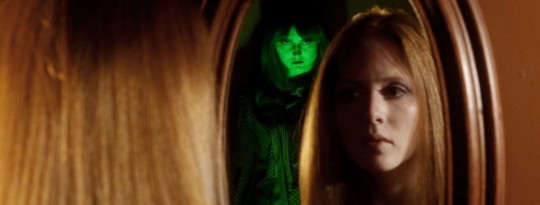
The fever dream-like 1976 drama The Witch Who Came from the Sea follows another woman who yearns for escape. Millie Perkins’ Molly copes with childhood abuse through fairy tales she spreads to everyone she encounters about her craven and violent father. She also finds solace from her male-dominated life through various storytelling constructs, including the myth of Venus and television broadcasts that literally speak to her through fictional characters and suppressed images of her father. The witch isn’t an overt symbol in the movie, but the elemental power of nature and womanhood is, as Molly channels these forces through bloody acts of violence (specifically castration), her own marked flesh (Molly’s tattoo becomes a totem of her personal mythology), and various sexual conquests (including her boss, who assumes a paternal role in her life). Traumatic memories of her past plague Molly, preventing her raging fantasies of empowerment from being neatly contained in any particular feminine role.
Men grow increasingly marginalized in witch cinema by the time The Craft was released in 1996, with many ending up dead or cast in the role of slavish fool. In 1987, The Witches of Eastwick saw three supernatural women defeating the devil (Jack Nicholson as a manipulative playboy) using their magical gifts. The same is true in The Craft, where Skeet Ulrich’s high school jock Chris becomes the object of a love spell gone wrong. Men are the victims in a reversal of the one-dimensional role that women—especially in slasher films and other horror movies where women are treated as disposable ciphers—have typically played on the big screen over the years. The Craft’s outsider-empowering message draws on the underground subcultures that attracted women during third-wave feminist movements like riot grrrl and grunge. “We are the weirdos, mister,” a line that teen witch Nancy (Fairuza Balk) snarls at a prying man, remains a powerful declaration that is still embraced by female viewers today.
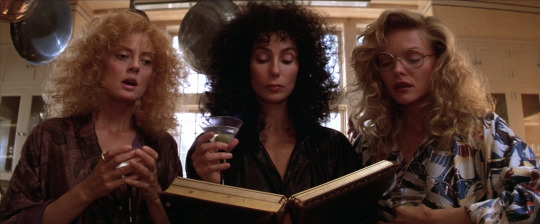
In The Witch, the popular 2016 supernatural folktale, writer-director Robert Eggers returns the mythical figure to its fabled past by suggesting the title creature that lurks in the thick of the forest may or may not be a figment of an early pioneer family’s paranoid imagination. The Witch also reinforces a new culture of self-reliance amongst women. Anya Taylor-Joy’s teenage Thomasin liberates herself from religious and gender oppression by invoking and making a pact with Satan himself. She is wooed by the archfiend, who assumes the form of a black goat and tempts her with honeyed words: “Wouldst thou like to live deliciously?”
To “live deliciously” is a defiantly unapologetic mantra for a new generation of witches and women. The call for reclamation has taken the form of radical DIY movements found amongst online hashtags like #witchesofinstagram and beyond. “We are the granddaughters of the witches you could not burn,” a line taken from a poem by Cari Lee Miller, has become a viral quote and rallying cry. The new pop cultural phenomenon of the witch speaks to an undeniable truth: anything that doesn’t support the multidimensional qualities of women, “good” or “evil,” denies their humanity and threatens to disempower them.
